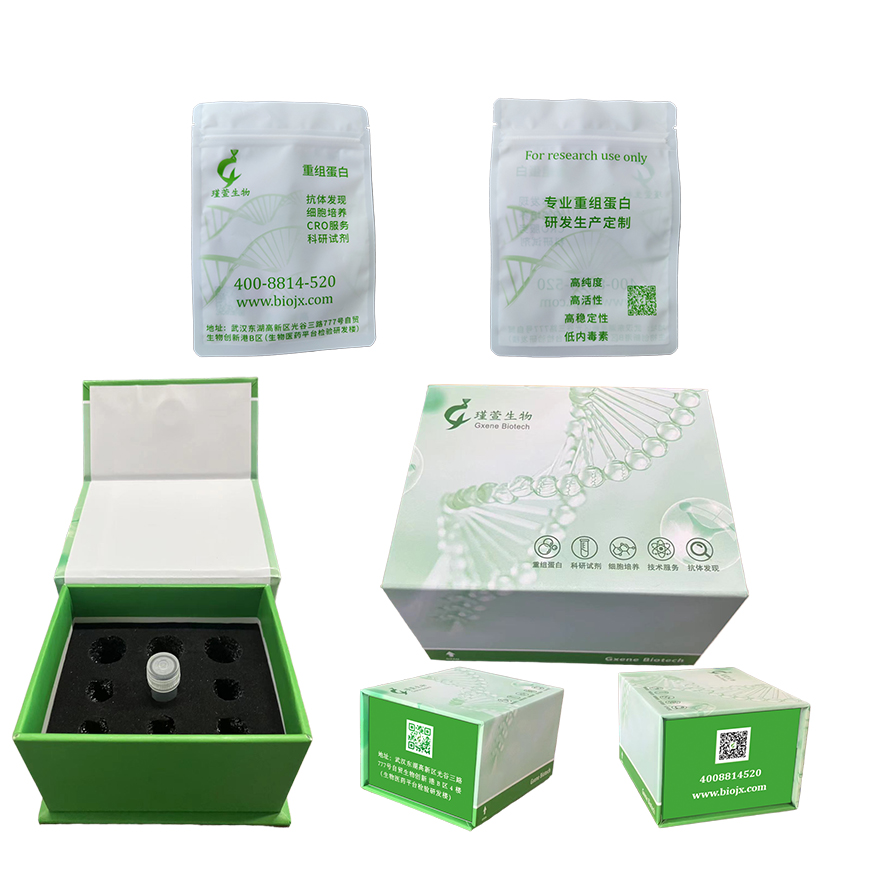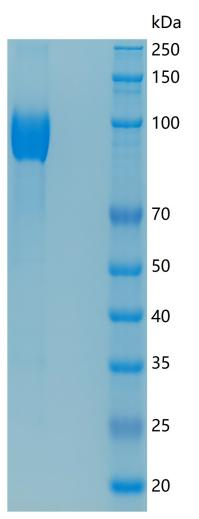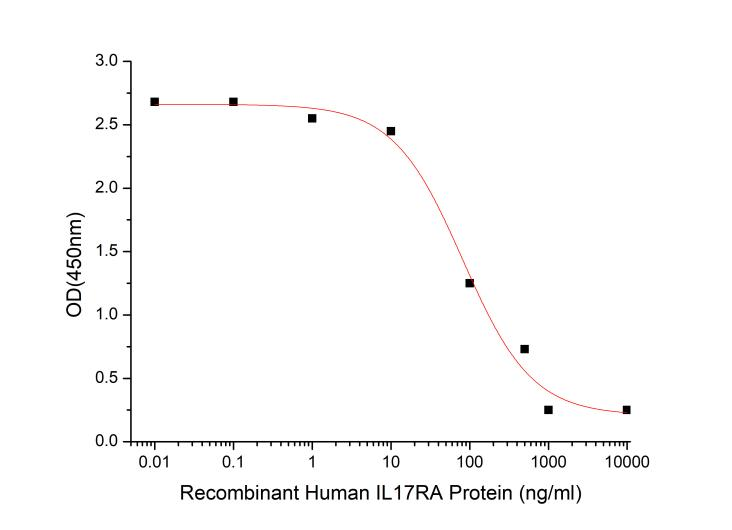研究方向
白细胞介素 17 受体 A (IL-17RA),也称为 CD217,是一种结合白细胞介素 17 的细胞因子受体。IL-17RA 是由活化的 T 淋巴细胞分泌的促炎细胞因子。IL-17受体家族由IL-17RA至IL-17RE五个成员组成。IL-17RA 亚基普遍存在,是 IL-17 家族其他成员的常见共受体亚基。IL-17RA 基因定位于人类染色体 22q11.1,广泛表达并表现出广泛的组织分布。
人 IL17RA 蛋白的酸序列在小鼠和大鼠 IL-17A 蛋白之间具有较低的同源性。
IL-17A 是原型 T 辅助细胞 17 (Th17) 细胞因子,在粘膜表面的宿主防御中发挥着重要作用,同时也充当重要的炎症介质,参与许多自身免疫性疾病的发病机制,包括类风湿性关节炎(RA)。IL-17RA 与 IL-17RC 配对,以共价同二聚体形式结合 IL-17A 或 IL-17F,也以异二聚体形式结合 IL-17A/IL-17F。IL-17RA 可提供针对病原体感染的保护,因为它在宿主防御机制中发挥着重要作用。IL-17A 通过 IL-17 受体 (IL-17R) 复合物激活下游细胞信号传导,该复合物由对 IL-17RA 具有更高亲和力的 IL-17A 受体 (IL-17RA) 和 IL-17C 受体 (IL-17RC) 亚基组成。IL-17A/IL-17RA 轴与多种急性和慢性气道和肺部疾病的发病机制有关。然而,IL-17RA 与 IL-17 受体家族其他成员的结合使亲和力转向 IL-17 家族其他成员。事实上,IL-17RA 与 IL-17RB 的组合以共价同二聚体形式结合 IL-17E。此外,IL-17RA还可以与IL-17RE缔合,以同型二聚体形式结合IL-17C。然而,IL-17RA 的参与不是强制性的,因为 IL-17RB 形成同型二聚体,以共价同型二聚体的形式靶向 IL-17B。
IL-17RA在类风湿性关节炎等多种炎症和自身免疫性疾病中发挥致病作用。IL-17RA 参与抗菌宿主防御和组织完整性的维持。在感染模型中已证明,中性粒细胞对于宿主防御至关重要,IL-17RA 缺乏会导致趋化因子水平降低和中性粒细胞数量减少,并增加对感染的易感性。此外,IL-17RA 由多种肠道细胞类型表达,针对 IL-17A 的治疗会诱导不良肠道事件,这表明有额外的组织特异性功能。IL17RA 缺陷是导致家族性念珠菌病 5 型 (CANDF5) 的原因。IL17RA 缺乏可能导致慢性皮肤粘膜念珠菌病的风险。
生物活性
Measured by its ability to inhibit IL-17-induced IL-6 secretion by NIH‑3T3 mouse embryonic fibroblast cells. The ED50 for this effect is 0.03‑0.1 µg/mL in the presence of 10 ng/mL recombinant human IL‑17.
After reconstitution, the protein solution is stable at -20℃ for 3 months, at 2-8℃ for up to 1 week.未开盖的干粉蛋白在 -20°C至-80°C可保存12个月;
复溶之后,蛋白溶液在-20°C及以下可保存3个月,在2-8℃可保存1周。
2.Measured by its binding ability in a functional ELISA. Immobilized Recombinant human IL17RA , His Tag at 2 μg/mL (100 μL/well) can bind Recombinant human IL-17A,His Tag with a linear range of 31.25-65 ng/mL.
背景信息
Interleukin 17A (IL17A) is a proinflammatory cytokine secreted by activated T-lymphocytes. It is a potent inducer of the maturation of CD34-positive hematopoietic precursors into neutrophils. This transmembrane protein (interleukin 17A receptor; IL17RA) is a ubiquitous type I membrane glycoprotein that binds with low affinity to interleukin 17A. Interleukin 17A and its receptor play a pathogenic role in many inflammatory and autoimmune diseases such as rheumatoid arthritis. Like other cytokine receptors, this receptor likely has a multimeric structure.



